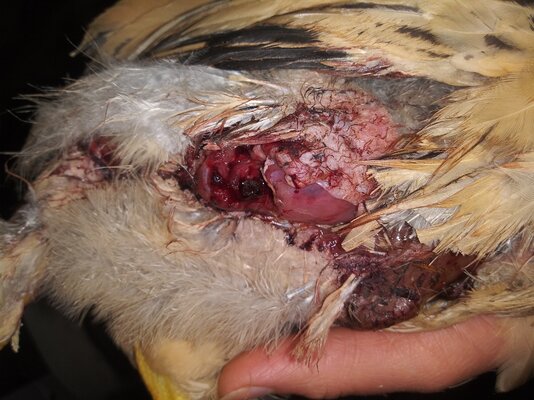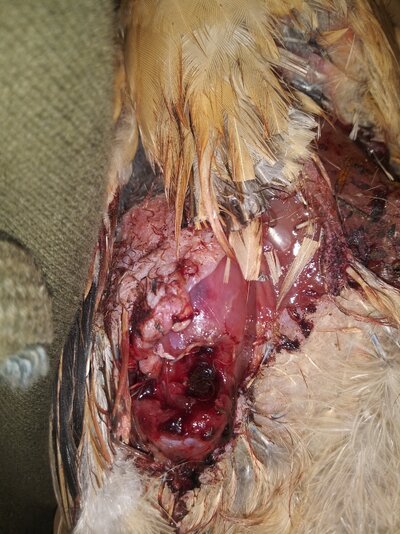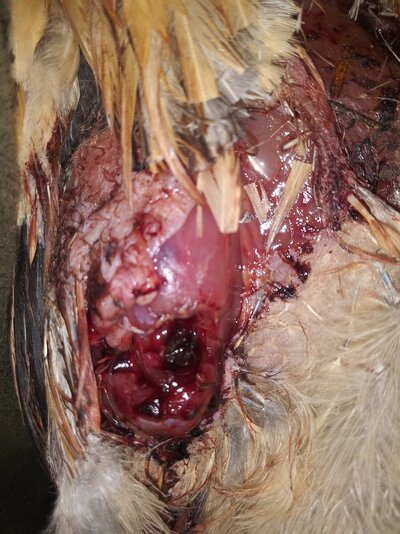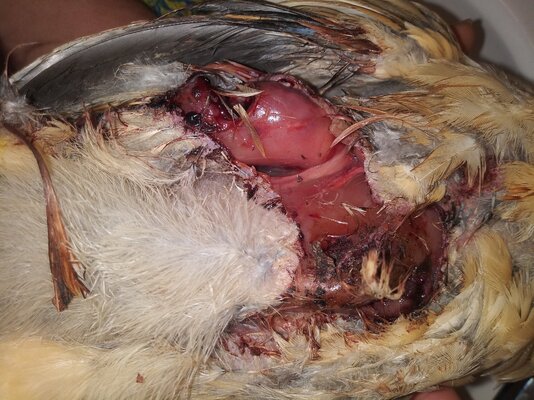LovesteadMama
Chirping
- Apr 8, 2021
- 78
- 208
- 96
I came out to feed the chickens this morning and noticed first that there was a cracked open/eaten egg and raccoon tracks inside of our chicken tractor. It's directly against the coop at night but I close the coop door to keep the chickens safe. I then went inside of the coop and noticed one of my brahmas was missing. There was only a pile of her feathers left behind outside of the coop and as I inspected further, I noticed that it appeared as though she was pulled through the chicken wire on the side of the coop. (I know chicken wire is not predator proof and it is on our agenda to build a new coop with hardware cloth but usually our dog does a good job of patrolling at night and alerting us when there's an issue)
I then noticed that our second brahma was injured. She has some fur missing on her back under her wing but when I turned her over, I knew it was bad. It appears as though a bone may be broken (clean break though I'm not certain it's a bone) on the thigh but she can still stand, walk and kick both legs around. It's bleeding but not profusely but the wound is wide open and I think may require stitches.
I don't want her to suffer but we cannot take her to the vet. Can I help her or do i have to dispatch her?
I don't want her to suffer but I also want her to live out her life. If there's a chance I can help her, I want to.
GRAPHIC PHOTO BELOW
........
............
.........
........

I then noticed that our second brahma was injured. She has some fur missing on her back under her wing but when I turned her over, I knew it was bad. It appears as though a bone may be broken (clean break though I'm not certain it's a bone) on the thigh but she can still stand, walk and kick both legs around. It's bleeding but not profusely but the wound is wide open and I think may require stitches.
I don't want her to suffer but we cannot take her to the vet. Can I help her or do i have to dispatch her?
I don't want her to suffer but I also want her to live out her life. If there's a chance I can help her, I want to.
GRAPHIC PHOTO BELOW
........
............
.........
........








